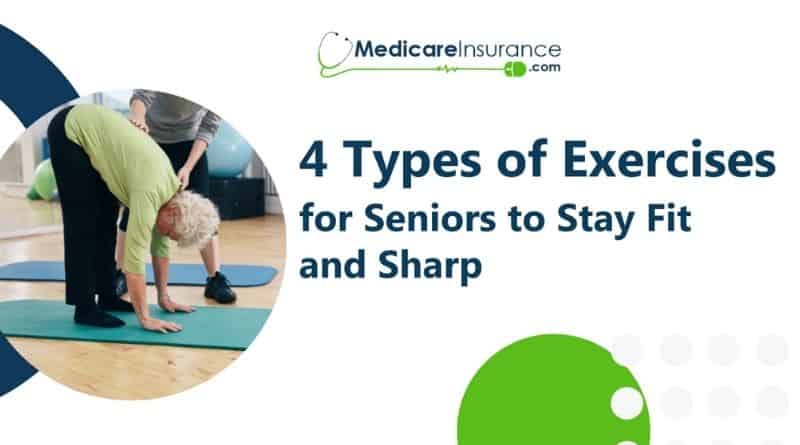Table of Contents
Why is it so important to stay active as you age?
Staying fit — both physically and mentally — is one of the biggest favors you can do for yourself as you age. According to senior exercise experts, staying physically fit after the age of 60 can often be the best way to ensure that you stay as healthy and happy as possible as you enter your golden years.
In addition to physical exercise, mental exercise is also incredibly important, as recent research has shown that a lack of mental stimulation as you age plays a major role in the decline of memory and cognitive ability.
Luckily, there are a number of ways that you can combat and stave off some of the unfortunate side effects of aging.
Types of Exercises for Seniors
Mobility Exercises
Maintaining mobility is one of the most important areas of physical fitness to focus on once you reach retirement age. In fact, doing so has been shown to keep your body free of pain and injury for longer as you continue to enjoy everyday activities well into your 60s, 70s, and 80s.
There are a variety of exercises designed specifically to increase mobility, including neck half-circles, heel-toe raises, cactus arms, hip bridges, and more. Many of these exercises are simple enough to allow you to perform them alone and versatile enough to perform them both in your home and out in nature.
Safe Weight Training
Another great way to stay fit and sharp as you age is through safe weight training exercises. If you are new to strength training or have little experience with it in your older years, remember to start small.
For the purposes of this type of weight training, you won’t need a full home gym or any fancy equipment. A few light dumbbells and any spacious area will do. You can start by looking into the safest way to execute lighter weight-based strength training exercises such as squats, incline pushups, arm curls, and stationary lunges.
Neuroplasticity Exercises
These types of exercises have less to do with brawn, and more to do with the brain. As stated, recent research has shown that age plays a major role in the decline of memory and cognitive ability. That’s why it’s so important to incorporate neuroplasticity exercises, like brain training, cognitive games, and memory exercises, into your daily routine.
Some of the best and simplest neuroplasticity exercises include arts and crafts, card and board games, and jigsaw, logic, and word puzzles. In fact, even something as simple as an intellectual conversation can go a long way toward improving attention, perception, reasoning, and processing speed for seniors and older individuals.
Intermediate Walking
If most physical exercises seem overwhelming or intimidating due to concerns surrounding your body’s physical strength and mobility, one of the simplest things you can do to stay active is to go for a walk.
Feel free to start slowly and carefully at first, but as you get more comfortable with your body and your route, don’t be afraid to start incorporating a few intermediate techniques that can improve the efficiency of your walk but quite a lot.
A few simple intermediate steps to try may include changing up your pattern of effort, introducing percussive breathing, or adding a little fancy footwork such as crossover steps or heel-to-toe strides.
How do I get started on the path to a healthier lifestyle?
Remember that it’s never a good idea to just jump in and tackle an exercise routine of any kind, no matter how simple it may seem. While it’s important to stay healthy and active both mentally and physically as you age, taking on anything too strenuous for your fitness level can have the opposite of the intended effect.
Furthermore, keep in mind that it is incredibly important to speak with your doctor or another professional health provider for some key safety tips before deciding to engage in a new exercise routine. Sometimes, they may recommend specific modifications, or key equipment like a good pair of walking shoes or a reliable walking stick.
Luckily for many people aged 65 and over, there are a variety of exercise and fitness programs designed specifically for your ability level. In fact, you may be surprised to learn that the costs associated with these types of programs can often be covered by a Medicare Advantage plan.
Are you interested in learning more about your staying physically and mentally fit under Medicare coverage? If so, don’t hesitate to reach out to a licensed insurance agent and Medicare Advantage expert, such as those available at MedicareInsurance.com, to further research and compare your options.
Recommended Articles:
Ways to Make Your Elderly Parents’ Home Life Much Easier


